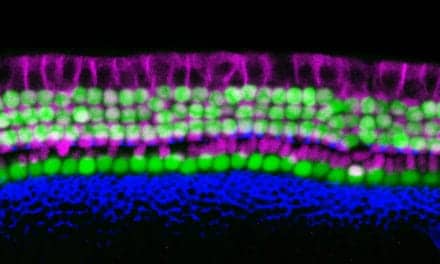Researchers at the University of Rochester’s Eastman School of Music and Department of Brain and Cognitive Sciences, Rochester, NY, who developed a unique test for perfect pitch have found surprising results.
Their research shows that perfect pitch—the ability to recognize and remember a tone without a reference—is apparently much more common in non-musicians than scientists had expected. Previous tests have overlooked these people because without extensive musical training it’s very difficult for someone to identify a pitch by name, the method traditionally used for identifying those with perfect pitch. The new test can be used on non-musicians, and is based on a technique to discern how infants recognize words in a language they’re learning.
The findings were presented Monday at the International Conference on Music Perception and Cognition in Sapporo, Japan.
"Tests for perfect pitch have always demanded that subjects already have some musical training or at least familiarity with a particular piece of music, which really limits the pool of candidates you can test," says Elizabeth Marvin, professor of music theory at the Eastman School of Music at the University of Rochester. "That means nobody really knew how prevalent perfect pitch is in humans in general."
The findings are part of a larger investigation into perfect pitch at Rochester.
While Marvin has been studying musicians with perfect pitch for many years, her research with Elissa Newport, professor of brain and cognitive sciences, began when Newport looked into research on pitch perception in animals and found that absolute pitch—the scientific name for perfect pitch—is widespread in the animal kingdom even though it’s very rare in humans. Humans are unique because we possess the ability to identify pitches based on their relation to other pitches, an ability called relative pitch. Previous studies had shown that animals such as birds can identify a series of repeated notes with ease, but when the notes are transposed up or down even a small amount, the melody becomes completely foreign to the bird. This holds true for almost all animals, but not humans, which suggests that, ironically, common relative pitch hearing may require more brainpower than perfect pitch.
Newport has worked for decades to understand how infants come to make sense of the jumble of sounds spoken to them, and one of her former students, Jenny Saffran, had begun to use their experimental materials to study pitch perception in infants. Marvin and Newport, working together, created a pitch-based test similar to these language-based tests.
Musicians and non-musicians listened to groups of three notes, with the groups played in a continuous stream in random order for 20 minutes, and the test made it very difficult for a student to identify and remember the names of particular notes because the notes were constantly coming in the 20-minute stream. Marvin and Newport then tested the students. Students who unconsciously used perfect pitch to indentify notes stumbled over the transpositions, but those who relied on relative pitch heard the transposed notes and automatically and unconsciously recognized them as familiar—the notes seemed to be of the same group heard before.
To the surprise of Marvin and Newport, there were a number of nonmusicians who used perfect pitch to identify groups of notes but did not know they had perfect pitch.
To read the entire story, click here.
[Source: Medical News Today]




